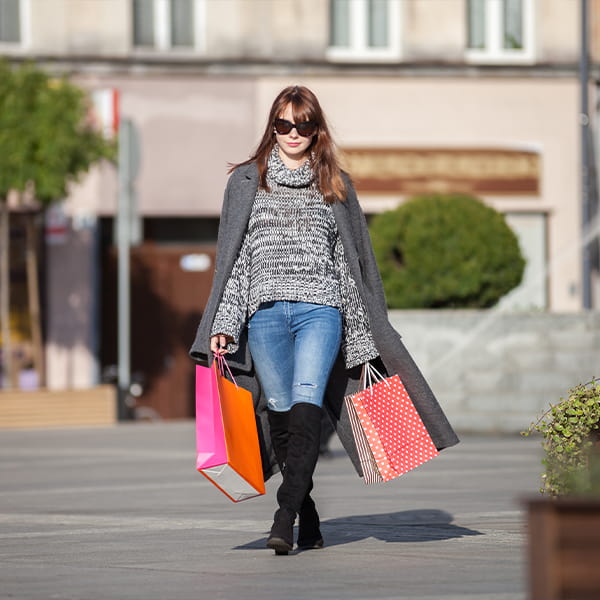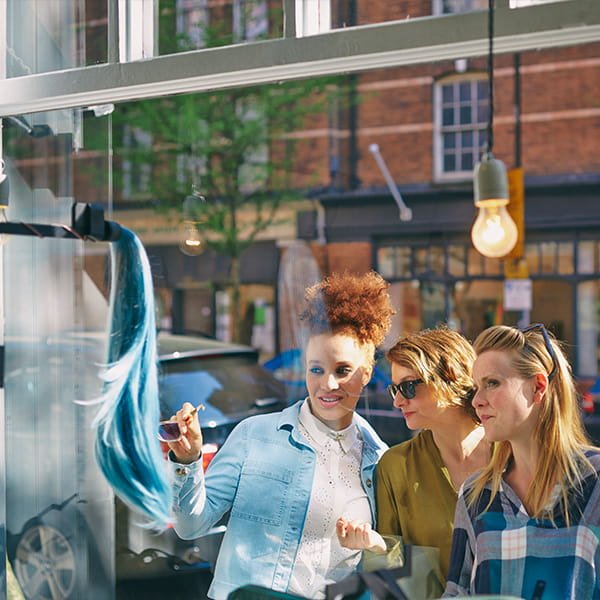There was a time when in-store shopping was the only form of shopping available. People would have no other choice but to go to a physical store and purchase the goods they needed in person. But the advent of the internet and the ongoing digitalisation of our economies and societies have changed the retail industry forever, making online shopping the undisputable king of the land.
However, this doesn’t mean that brick-and-mortar stores are a thing of the past. While it’s true that e-commerce provides accessibility, convenience and comfort, bringing an unimaginable wide range of products and services to customers’ fingertips, in-store shopping still maintains a special appeal. That’s because conventional stores stimulate all senses and provide a unique kind of shopping experience that could never be replicated in the virtual realm.
When most people want to shop to make themselves feel better, a phenomenon known as shopping or retail therapy, they don’t get excited about scrolling down on e-commerce site pages until their fingers grow numb or testing products via virtual try-ons. They want to see the items for themselves, feel the clothes and try them on, benefit from a bespoke personal shopping experience, walk through the aisles and get lost among all the carefully curated displays. This is what makes in-store shopping so fun and alluring.
That being said, there are also downsides to offline shopping that can chip away at its charm and ruin shoppers’ retail therapy sessions. Fortunately, there are also ways to combat these inconveniences and unpleasant surprises. It all starts with identifying the most common risks and hazards and finding the right solutions to keep them at bay.
Accidents
Retail stores may seem like some of the safest places on earth at first glance, especially the ones located in shopping malls and big commercial centres. However, slips, trips and falls remain a common cause of concern in these settings. These are often caused by food and beverage spills, uneven surfaces, recently cleaned floors, wet floors, clutter and poor organisation of the space, poor lighting and so on. No matter how hard retailers try to mitigate these situations, the risk of slip, trip and fall accidents is ever-present.
Customers who suffer accidents and get injured on a business property like a mall, shop or supermarket through no fault of their own can claim compensation for their damages if they can prove the shop was liable for the incident. You can learn more about how compensation claims work at https://www.howmuchcompensation.co.uk/.
However, it’s best to avoid these scenarios altogether, so you should never rely on the safety measures set in place by shop owners and occupiers. If you plan to go on a shopping spree, we suggest you wear comfortable shoes to reduce the risk of tripping and falling. And even though the scenery can be distracting, you should always pay attention to your surroundings and watch your step so you can spot potential hazards in time and avoid them.


Overspending
With all the pretty things lining stores’ shelves and displays, it’s easy to get carried away and spend more money than intended (and sometimes more money than you have). And if you do this often enough, it can leave a huge dent in your budget. Retail therapy is about boosting your mood by purchasing things that make you happy, not about going broke after a few shopping sessions. So, if you take things too far it can have the exact opposite effect.
That’s why being disciplined pays off. We know that’s a lot easier said than done, but there are a few tricks that can help you keep your spending in check. Planning your purchases and making a list of the things that you want to buy might not sound like a lot of fun, but it can curb your impulse to overspend. Deciding on a maximum amount of money for shopping therapy can be equally effective. If you don’t trust your sense of self-control, you can leave your credit and debit cards at home and only bring as much money as you’re willing to spend. Also, waiting a few minutes before deciding if you really want to buy an item or not could help you control your urges.
Theft
Most stores and shopping centres these days are packed with security cameras and agents to keep both businesses and customers safe. However, security cameras don’t cover all angles and agents can’t be everywhere at the same time. Besides, robbers and thieves are skilled and know when and how to act, so the risk of being robbed while shopping in-store is also something you should take into account.
There are several tips that can help you reduce the risk of becoming a victim of theft and enjoy safer shopping experiences. First of all, you should only shop in locations that feel safe to you: stores or commercial centres where you’ve been before and places that invest heavily in security are the best spots to shop if you want to have peace of mind. Secondly, you should always keep your belongings in check. Consider using a fanny pack instead of a purse or if you do carry a purse, swing it in front of you so you can keep it in view at all times. Be aware of the people around you and approach a safety agent if anything seems suspicious.
If you take your car with you, make sure you park in well-lit areas to discourage thieves from following you as you walk back to your vehicle. And most importantly, bring a couple of friends with you when shopping. This will not only make the experience much more entertaining, but it’ll also make it less likely for you to be targeted by thieves.
Wrapping up
Shopping can be a pleasant and even therapeutic experience for everyone, but only if it’s approached properly. Safety should always come first and fun is sure to follow after, so keep these tips in mind next time you want to get your dose of retail therapy.

















